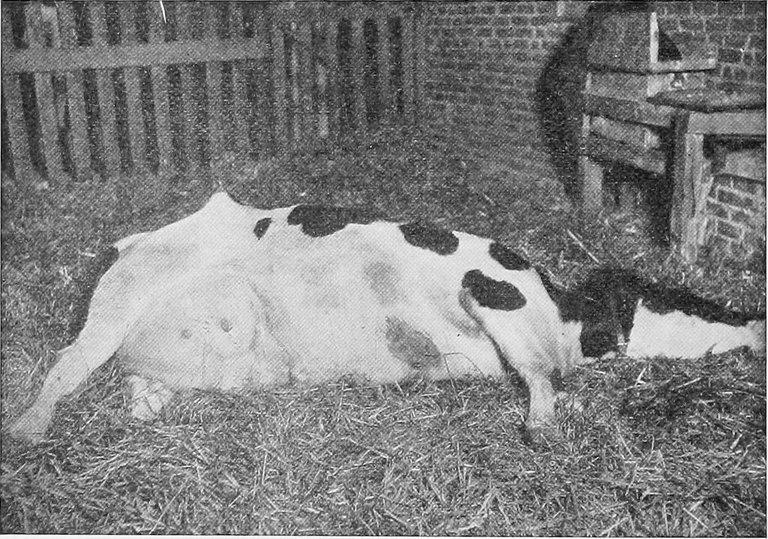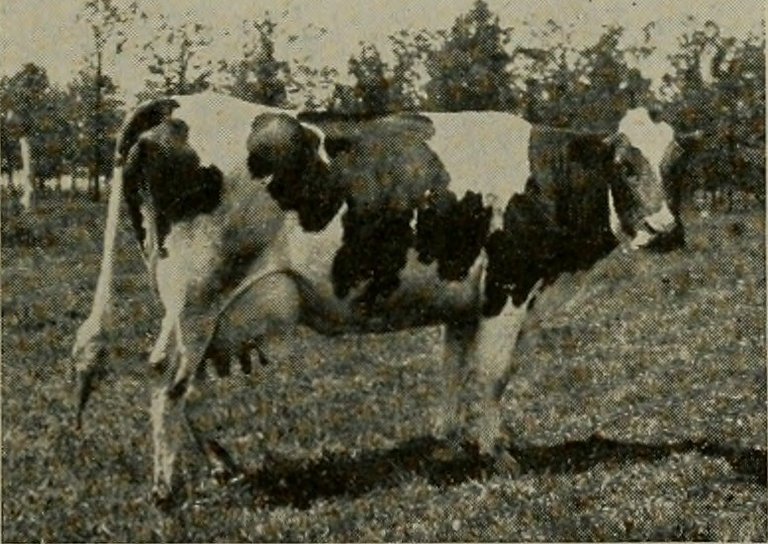When we hear milk or anything related to milk production, the first animal we take our minds to is cows; today's topic is not quite different from theirs because milk fever primarily affects dairy cattle but can also be found in beef cattle and non-bovine domesticated animals.
Milk fever has several names; it can be called hypocalcemia, paresis puerperal, and parturient apoplexy; it is a disease that primarily affects dairy cows. Dairy cows naturally stand a high chance of being at risk of hypocalcemia at the beginning of lactation; at this point, daily calcium excretion increases suddenly from about 10g to 30g daily.
Image source
Calcium is significantly important in cows as they perform essential functions in the body. It is highly important for muscle cells and nervous systems, it is also very essential for muscle contractions. If the level of calcium in the blood is extremely low, it would be impossible for the muscle to contract, and when this happens, it becomes impossible for the cow to stand up or move.
Milk fever is caused by a lack of adequate calcium in the blood serum. The dairy cow would abruptly change its metabolism at the end of the day, moving from a resting phase to a high-performance phase, and during the dry season, there is a relatively low need for calcium.
This situation of milk fever stresses calcium homeostasis and could cause the concentration of blood calcium to fall below the norm lower reference range of about 8.5mg/dL. Most cases of milk fever occur between the onset of parturition and three days after parturition. Apart from causing parturient paresis, a case of hypocalcemia may also contribute to uterine prolapse, dystocia, metritis, abomasal displacement, mastitis, and retained fetal membranes.
Image source

The infection stages happen in three discernible phases; in the first stage, the cows are standing and ambulatory, showing clinical signs of excitability and hypersensitivity. They may also have fine tremors over the triceps and flanks, add display head bobbing, and eat twitching
This stage also comes with cows being restless, shuffling their rare feet too. Treatment should be initiated during this stage or risk having it proceed to phase two.
During the second phase of parturient paresis, it gets so severe that the cow is unable to stand, they lack sufficient muscle to control and maintain sternal recumbency. The cow may find it difficult to urinate at this stage due to the distended bladder on rectal examination.
In the third phase, the cow loses consciousness to the point of going into a coma. They lie flat on their sides unable to maintain sternal recumbency. At this stage, the cow may only have a few hours left to live, except treatment is carried out instantly.
Image source

Any treatment that must be administered to a cow with milk fever needs to be prompt, as the chances of the animal getting muscle and nerve damage stand high. An excessive administration of calcium during treatment increases the chances of hypocalcemic relapse. This is the more reason why only an expert should be allowed to carry out the treatment, as the lowest dose of calcium is what is required to restore normal blood calcium concentration to be used.
Milk fever would most likely happen to a cow when any of these conditions are prevalent;
- Cows who have a history of hypocalcemia.
- The Cows who have a fat score of 3.5 or more.
- Heavy grain feeding.
- Cows who have a history of hypocalcemia.
- Cows who experience late pregnancy.
- Cows that are older than five years.
To prevent the occurrence of milk fever, farmers have a role to play; they need to ensure constant access to the field during calving, but at the same time, ensure there is no issue of overfeeding.
Calcium intake has to be less than 50g/day. Heavily pregnant ewes should not be handled at this point.
References
msdvetmanual/metabolic-disorders
mla.au/research -and-development
Thanks for your contribution to the STEMsocial community. Feel free to join us on discord to get to know the rest of us!
Please consider delegating to the @stemsocial account (85% of the curation rewards are returned).
Thanks for including @stemsocial as a beneficiary, which gives you stronger support.